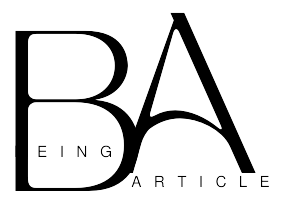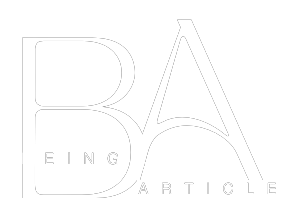How To Say, et al?
Et al.” is a Latin term that means “and others.” It is commonly used in academic writing to refer to a group of authors when citing a source with more than two authors. To use “et al.” correctly, you should list the first author’s name followed by “et al.” in the citation. For example, “Smith et al. (2019) found that…” This indicates that there are additional authors beyond the first author. Still, their names are not included in the citation. It is important to note that “et al.” should only be used in citations and not in the reference list at the end of the document, where all authors’ names should be listed.
In academic writing, you’ll use et al. to shorten authors’ lists when citing sources. This helps keep your paper clean and clear while allowing readers to learn who contributed to your presentation.
However, a few rules govern how you use et al. Depending on your style guide, you might have to follow some specific procedures for when to use et al.
Et al. Is An Abbreviation.
The abbreviation et al. is a Latin phrase meaning “and others.” This is an important abbreviation because it can be used in various contexts, including academic writing.
This term refers to a shortened list of people’s names and is most commonly used in citations. However, it is sometimes used in parentheses or endnotes and can be included in references formatted according to MLA and Chicago styles.
It’s an abbreviation for the Latin phrase et al. ia (et al. ii, or et al. ice, the masculine and feminine plural forms). Et al. ia means “and others” in a shortened list of people’s names, and it helps writers spare readers from having to labor over long lists.
In addition to et al., ia et al. can also be an abbreviation for the phrase et cetera. This phrase means, “and the rest,” and it is a common abbreviation in scholarly writing.
Like all Latin phrases, et al. can be confusing to use. It can be hard to figure out the correct form and usage, so it’s best to learn it early in your academic career.
For example, the report written by King et al. It was a meta-analysis of research on standardized tests in education. It was a great study and had several contributors.
When citing a work with multiple authors, the APA recommends using the first author’s name and then et al. It is especially helpful for citations with three to five authors, but you can also use it for a reference list when there are more than two authors.
If you cite someone in a sentence, you must always add a period after the phrase to show it is an abbreviation. It is also a good idea to include a period when the phrase begins or ends a sentence because it can be difficult to understand where it ends and begins.
Et al. can be confusing to read, but it is an important abbreviation useful in various contexts. It can help you avoid spelling and formatting unfamiliar Latin terms, which can negatively affect your grade.
Et al. Is A Latin Term.
When you want to give credit to a long list of authors without naming them all, it’s usually easier to use et al. This Latin term means “and others.” It can be used in academic papers, foot- and endnotes, and reference lists formatted according to MLA and Chicago styles.
This abbreviation can help save you a lot of time, and it’s an excellent way to avoid creating unnecessary confusion when writing about the people you mention in your papers. First, however, you should know how to use it correctly so your work is not sloppy or confusing.
Et al. ia is the Latin term for “and others.” It can be written in masculine or feminine forms. You can cite multiple authors using the masculine form of the phrase but using the feminine version et al. It is more appropriate for a group of women or girls.
As with many Latin terms, it can be difficult to understand what et al. means in English. The word has several different meanings, and it can be hard to know when to use it.
It has many other uses, including a legal term for property distribution in wills. Using et al. in the wrong context can create conflict in both cases.
Fortunately, there are some common rules for how to use this Latin abbreviation. The first rule is to always include a period after the “al” of et al.
Another rule is that you should only use it when a list contains more than two authors. If you do, add a period after the last author’s name.
The most common example of this is when referring to scientific articles. The number of authors in these articles has been increasing for decades. So instead of mentioning all the authors, you can say, “Einstein et al.”
This phrase is often used in legal documents and estate planning plans. It can help shorten a list of beneficiaries, but it can also confuse if more than two people are listed.
If you are writing a legal document or plan, you should use the correct Latin terms to make your text clear and professional. The same rules apply to social media and other online forms of communication.
Et al. Is A Legal Term
When writing an academic paper, keeping track of all the authors who contributed to your work can be hard. If you’re citing multiple authors, it can be helpful to use the abbreviation et al.
This term is also used in legal documents, such as deeds and agreements. It’s an abbreviation of et al. ia, which means “and others,” and it is typically followed by a person’s name or a list of names.
While et al. ia and et al. are gendered Latin phrases that can be difficult to translate into English, it’s important to understand their differences. In a sense, et al. ia means “and other people,” while et al. means “and women.”
As an abbreviation, it is commonly used in the United States and Canada and can be found in many legal documents. It is also often used in books and articles in medicine and science to indicate that more than one author collaborated on a project.
It should not be italicized unless you’re writing for a publication that requires it. For example, APA, MLA, and the Chicago Manual of Style do not require italics, but some field-specific publications do.
When citing multiple authors in your paper, it’s important to use the abbreviation et al. ii instead of et al. ia. This is because et al. ii is the masculine plural, and et al. ii is the feminine plural.
The abbreviation et al. is also an excellent way to refer to many individuals without writing them all out separately. It’s a great way to give credit to all the people who contributed to your research and can help reduce clutter on the page.
Using et al. in an academic paper is important, but knowing what it means and when to use it is also helpful. The term should be used in in-text citations with four or more authors, and it should be used in reference lists formatted according to APA, MLA, and Chicago styles.
APA style, which the American Psychological Association creates, is a popular style for writing in psychology and social science. It uses the author-date system in in-text citations and short footnotes and the notes and bibliography system for long footnotes. In addition, its reference lists require the surnames and first initials of up to 20 authors, placing an ampersand before the final author.
Et al. Is A Social Media Term.
Social media is full of jargon, and business owners often struggle to make sense of this digital lingo. That’s why it’s important to understand the terms, phrases, and acronyms commonly used in the space.
Et al. is a Latin abbreviation that means “and others.” It’s commonly found in scholarly writing, referring to other people or contributors. It can also be found in popular publications, such as lists of films or companies.
It is often used as an abbreviation to spare writers from having to list all of the names of people or entities, such as the book’s authors. It’s also often used in reference citations of academic documents, as it saves the reader from reading through a long list of names.
This is because it allows a reader to easily find the name they want and is less likely to confuse readers. It’s also a more concise way to say that more than two people created a piece of work.
While et al. is a useful abbreviation, it can be misused in many ways. One example is legal documents, which can confuse readers if it is misinterpreted as a way to list all of the people named in a document.
Another use for et al. is in social media, where it’s commonly used to refer to a post that gets a lot of engagement, such as many retweets or shares. However, it’s important to note that these metrics are not always reliable or meaningful and don’t provide a comprehensive picture of a page’s performance.
The team at media update has compiled a list of 10 social media terms you need to know if you’re trying to build your business online. These can help you better understand what your customers seek on Facebook, Instagram, or Snapchat.
FAQ’s
What does “et al.” mean?
“Et al.” is an abbreviation for the Latin phrase “et alia,” which means “and others.” It is commonly used in academic and scientific writing to refer to a group of authors when citing a source.
How do you say “et al.”?
“Et al.” is typically pronounced as “et al” with a short pause after “et” and no emphasis on any particular syllable. It is not necessary to pronounce the period at the end of the abbreviation.
Is there a difference between “et al.” and “et alia”?
No, “et al.” and “et alia” are interchangeable and mean the same thing.
How is “et al.” used in writing?
“Et al.” is used to indicate that there are additional authors of a source beyond the one(s) mentioned. For example, “Jones, Smith, et al. (2019) found that…” would indicate that Jones and Smith were among the authors of the source, but there were others who were not named.
Are there any other common Latin abbreviations used in writing?
Yes, some other common Latin abbreviations used in writing include “ibid.” (short for “ibidem,” meaning “in the same place”), “cf.” (short for “confer,” meaning “compare”), and “e.g.” (short for “exempli gratia,” meaning “for example”).
Are there any style guidelines for using “et al.”?
Yes, different style guides (such as APA, MLA, and Chicago) have specific rules for using “et al.” in citations and references. It is important to follow the guidelines for the specific style you are using to ensure proper formatting and citation practices.



















